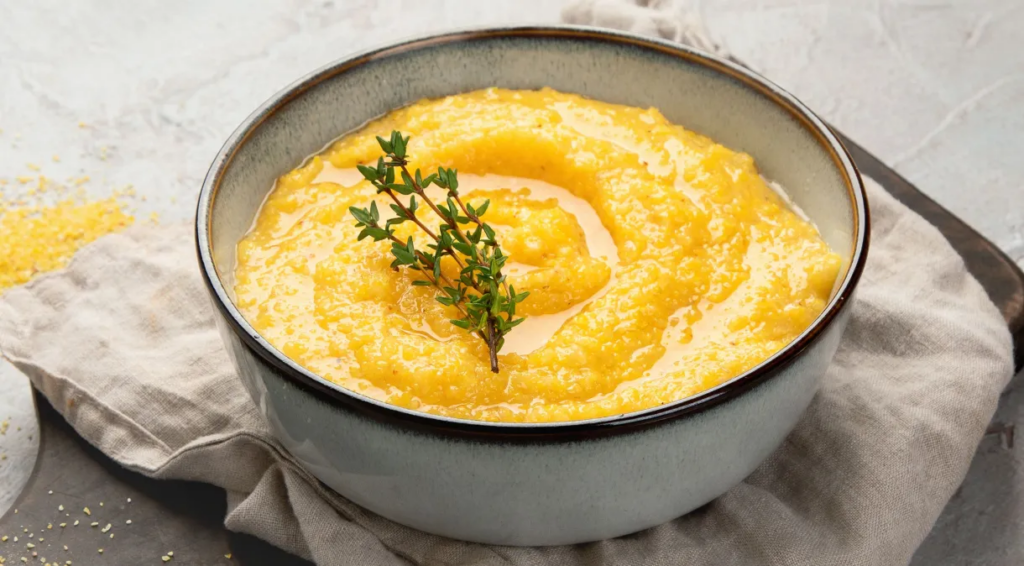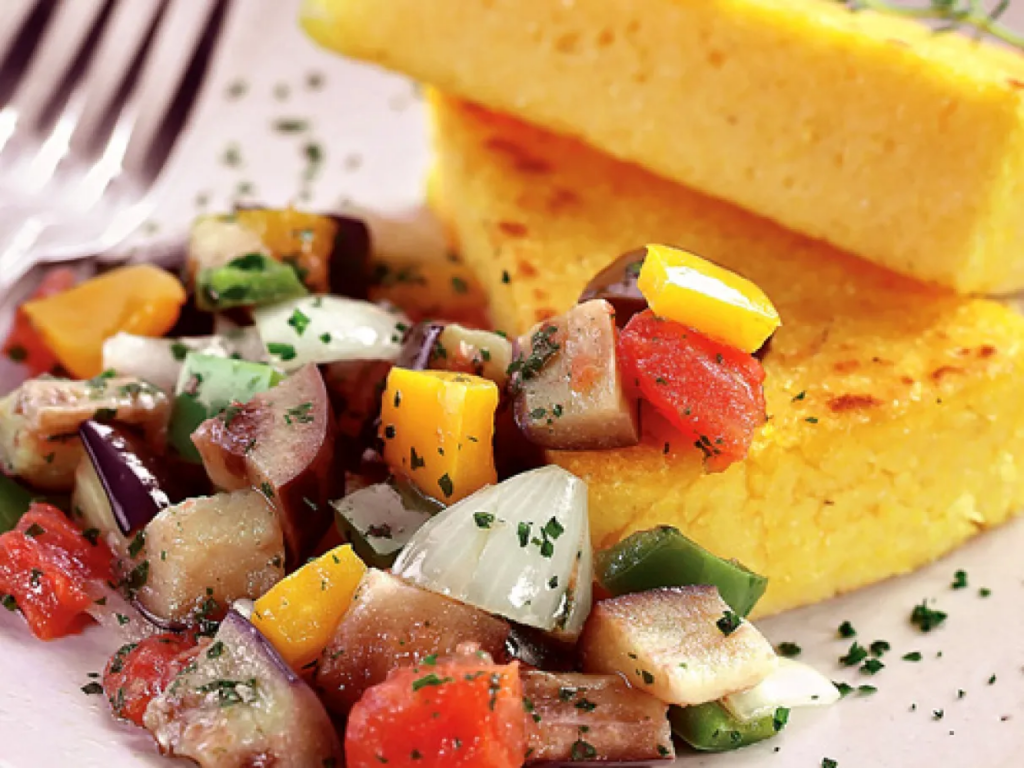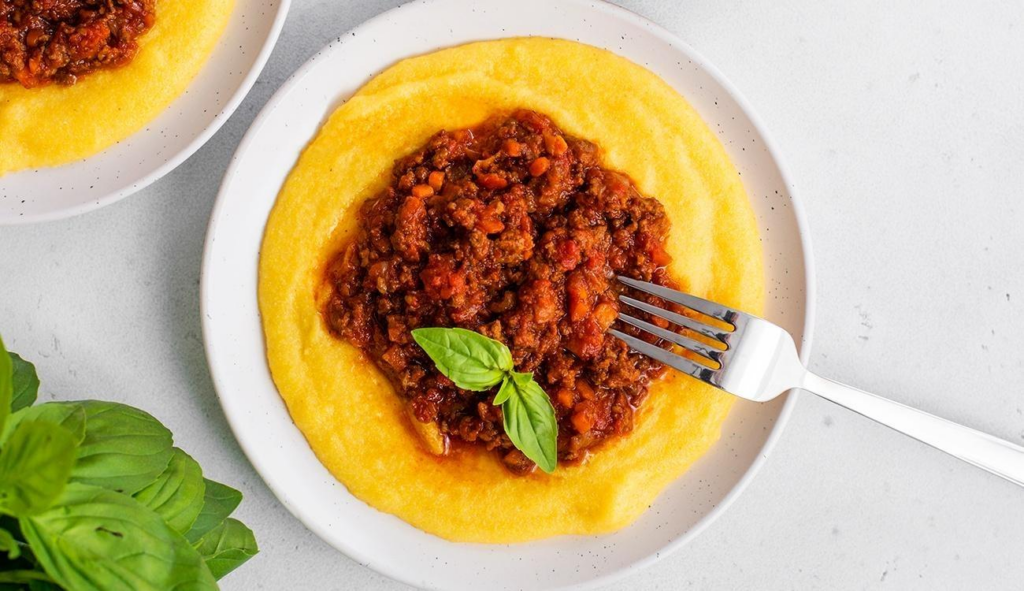Advertisement
Amidst the comforting aromas that permeate Italian cuisine, few dishes manage to capture the essence of tradition like polenta. With its charming simplicity and robust flavor, this creamy-textured delicacy is a real treat for the senses.
In this meticulously prepared guide, we'll unlock the secrets behind the preparation of a traditional polenta, guaranteeing not only a delicious dinner, but also a culinary experience that transports diners to the heart of Italy.
Advertisement
Step by step: The Art of Preparing Authentic Polenta
In the Italian tradition, polenta is much more than just a dish - it is an expression of love, care and tradition passed down from generation to generation. Its preparation requires attention to detail and a special touch that transforms simple ingredients into a memorable gastronomic experience. Follow this meticulous step-by-step guide to master the art of making authentic polenta and guarantee a delicious dinner:
Choose the right ingredients
Start with high-quality corn flour. Traditionally, yellow corn flour is used, but you can also opt for white, depending on your preference. Make sure you have water or vegetable stock on hand to flavor the polenta.
Advertisement
The perfect proportion
For a creamy, soft polenta, the classic ratio is 4 parts liquid to 1 part corn flour. However, you can adjust this ratio according to the consistency you want.
Boil the liquid
In a large saucepan, bring your chosen liquid (water or vegetable stock) to the boil over medium-high heat. Add a pinch of salt to enhance the flavors.
Slowly add the corn flour
With the liquid boiling, add the cornflour in a slow, steady stream, stirring vigorously with a wire whisk or wooden spoon to prevent lumps from forming.
Cook over low heat
Reduce the heat to medium-low and keep stirring constantly to ensure that the polenta cooks evenly and doesn't stick to the bottom of the pan. This process can take 30 to 40 minutes, depending on the desired texture.
Adjust the consistency
If the polenta is too thick, gradually add more liquid until it reaches the desired consistency. If it's too liquid, keep cooking until it thickens.
Finish with butter and cheese
When the polenta is cooked, remove it from the heat and add butter and good quality grated cheese. This will add richness and creaminess to the dish.

Serve immediately
Polenta is best enjoyed while it's still hot and fresh. Serve it as an accompaniment to meat, chicken, fish or vegetable dishes, or even as a main course, topped with tasty sauces or sautéed mushrooms.
Secrets of Italian Cuisine: Classic Polenta Recipe
To begin this gastronomic journey, the ingredients play a crucial role. The choice of quality corn flour is fundamental to guaranteeing the polenta's authentic texture and flavor. While some may prefer yellow corn flour, others opt for the white variety, each giving unique nuances to the final dish.
In addition to corn flour, water or vegetable stock are indispensable travel companions. These liquids not only provide the basis for cooking the polenta, but also add depth and flavor to the mixture, elevating it from a simple porridge to a delicacy worthy of discerning palates.
The secret to perfect polenta lies in patience and attention to detail during the cooking process. As the mixture of corn flour and liquid is carefully heated over low heat, the magic happens slowly. Constant stirring is essential to prevent lumps from forming and ensure a creamy, uniform texture.
As the polenta reaches the desired point of creaminess, it's time to add the finishing touch - a generous portion of butter and quality grated cheese. These ingredients not only intensify the flavor of the polenta, but also add a richness and indulgence that elevates the dish to new heights of gastronomic pleasure.
Step-by-step recipe
Polenta is one of the most iconic dishes in Italian cuisine, a simple mixture of corn flour and water that turns into a comforting and versatile delight. Follow this step-by-step guide to prepare a traditional Italian polenta that is sure to impress your guests and fill your home with irresistible aromas.
Ingredients
- 4 cups of water
- 1 cup yellow corn flour
- 1 teaspoon salt
- 2 tablespoons butter
- 1/2 cup grated Parmesan cheese (optional, to finish)
Step 1: Preparing the Ingredients
Start by gathering all the ingredients needed for the recipe.
Put the water in a large saucepan and bring to the boil over medium-high heat.
Step 2: Adding Corn Flour
When the water is boiling, slowly add the cornflour in a thin, steady stream, stirring vigorously with a wire whisk or wooden spoon to prevent lumps from forming.
Step 3: Cooking the polenta
Keep stirring constantly while the polenta cooks over a medium-low heat. This will help ensure a smooth, creamy texture.
Cook the polenta for about 30-40 minutes, or until it is thick and creamy and the cornflour is fully cooked.
Step 4: Finalization
When the polenta is ready, add the butter and mix well until it is completely incorporated.
If you like, add the grated Parmesan cheese at this point for an extra touch of flavor and creaminess.
Step 5: Serve
Transfer the polenta to a serving dish or individual plates.
Serve immediately, while it's still hot and creamy, with sauces, vegetables, meat or grilled chicken, depending on your preference.
With this step-by-step recipe, you'll be ready to impress your friends and family with a traditional Italian polenta that's sure to become a favorite dish on your table. Buon appetito!
Secrets and foolproof tips
Preparing a perfect polenta goes far beyond simply mixing corn flour and water. It requires technique, attention to detail and some well-kept secrets of Italian cuisine. In this guide, we'll reveal foolproof tips to ensure that your polenta is always creamy, tasty and worthy of applause.
1. choose the right corn flour
Opt for quality corn flour, preferably the Italian variety with a medium or fine grind. This will ensure a smoother texture and a creamier polenta.
2. Proportion of liquid and flour
The ideal ratio of liquid to corn flour is crucial. Generally, use 4 parts liquid to 1 part corn flour for a creamier polenta. However, you can adjust this ratio according to your preference for consistency.
3. Boil the Liquid Properly
Before adding the cornflour, make sure that the liquid (water, vegetable stock, or a combination of both) is boiling vigorously. This will help prevent lumps from forming in the polenta.
4. Gradually add the Corn Flour
Add the cornflour in a thin, steady stream, while stirring vigorously with a wire whisk or wooden spoon. This helps prevent lumps from forming and ensures a smooth texture.
5. Stir constantly
Throughout the cooking process, it is essential to stir the polenta continuously to prevent it from sticking to the bottom of the pan and to ensure that it cooks evenly.
6. Cook slowly over low heat
Reduce the heat to medium-low as soon as the cornflour is added and cook the polenta slowly. This allows the corn flour to slowly absorb the liquid and develop its characteristic texture.
7. Adjust Consistency
If the polenta is too thick, gradually add a little more liquid until it reaches the desired consistency. If it's too liquid, keep cooking until it thickens.
8. Finish with butter and cheese
Add a generous portion of butter and grated Parmesan cheese to the already cooked polenta. These ingredients not only add flavor, but also give it a creamy, irresistible texture.
9. Serve immediately
Polenta is best enjoyed when it's hot and fresh. Serve it immediately after preparation, accompanied by your favorite sauces, vegetables or meats.
Accompaniments
A well-prepared polenta is an open invitation to a multitude of side dishes that complement its flavor and texture in a delicious way. Here are some suggestions for side dishes that will take your polenta to an even higher level of gastronomic pleasure:
1. homemade tomato sauce
A fresh tomato sauce, seasoned with garlic, onion and herbs, adds a burst of flavor to the polenta. If you prefer, you can add vegetables such as eggplant or zucchini to the sauce for a more substantial option.
2. Sautéed mushrooms
Fresh mushrooms sautéed in butter with garlic and herbs are a classic accompaniment to polenta. They add a pleasant texture and an earthy flavor that goes perfectly with the creaminess of the polenta.
3. Meat Ragú
A pork, lamb or beef ragú slow-cooked in a rich, full-bodied sauce is an indulgent option that turns your polenta into a truly comforting meal.
4. Roasted vegetables
Vegetables such as pumpkin, sweet potatoes, carrots and peppers roasted in the oven with olive oil, salt and herbs are a healthy and colorful option to accompany polenta.

5. Processed cheese
As well as adding parmesan cheese to polenta, you can also serve your polenta topped with melted cheese, such as fontina or gorgonzola. The heat melts the cheese, creating a rich, creamy topping for the polenta.
6. Poche eggs
A soft, runny poached egg on top of the polenta is an indulgent way to add extra protein and creaminess to the dish.
7. Sausage
Grilled sausages are a classic accompaniment to polenta. The smoky flavor of the meat complements the creamy texture of the polenta wonderfully.
8. Braised spinach
Spinach sautéed with garlic and olive oil is a light and healthy option that adds color and nutrients to your polenta.
9. Seafood
Seafood such as grilled prawns, scallops or mussels in a white wine sauce is an elegant and delicious option to accompany polenta.
10. Ratatouille
A mixture of Mediterranean vegetables such as eggplant, zucchini, tomatoes and peppers cooked slowly in olive oil and herbs is a light and healthy option to accompany polenta.
How to make fried polenta
In addition to traditionally creamy polenta, another delicious way to enjoy this Italian dish is with fried polenta. This crunchy, comforting variation offers a unique gastronomic experience, combining the creaminess inside the polenta with a golden, crispy crust on the outside. See our guide on how to make fried polenta to complement your culinary journey:
1. Prepare Traditional Polenta
Before making fried polenta, you will need to prepare a traditional polenta following the steps described above. Make sure the polenta is well cooked and thick enough to be molded when it cools.
2. Let the polenta cool and solidify
Pour the cooked polenta into a greased baking dish and spread it out evenly. Leave to cool at room temperature for at least an hour, or until the polenta has completely solidified.
3. Cut Polenta into Desired Shapes
Once the polenta is firm, cut it into the shapes you want, such as rectangles, squares or circles. You can also use cookie cutters for more creative shapes.
4. Bread the polenta
Coat each piece of cut polenta in cornmeal or wheat flour, making sure that all sides are well covered. This will help create a crispy crust when the polenta is fried.
5. Fry the polenta
In a large frying pan, heat enough vegetable oil to cover the bottom of the pan over medium-high heat. When the oil is hot, add the breaded polenta pieces in batches, making sure they don't get too crowded in the pan.
6. Fry until golden brown
Fry the breaded polenta for about 3-4 minutes on each side, or until they are golden and crispy on the outside. Use tongs or a spatula to carefully turn the polenta pieces over.
7. Drain Excess Oil
After frying, transfer the polenta pieces to a baking sheet lined with paper towels to drain off the excess oil.
8. Serve hot
Serve the fried polenta immediately, while it's still hot and crispy. It's delicious on its own or accompanied by sauces such as marinara sauce, garlic aioli or pesto sauce.
See also: Simple lemon tart with cornstarch: Here's how to make it
March 30th, 2024

She has a degree in Languages - Portuguese/English, and is the creator of the Escritora de Sucesso website. As a writer, she seeks to expand everyone's knowledge with relevant information on various subjects. At SoMuchToSayToday, she brings news and content ranging from entertainment to the country's economic situation.



